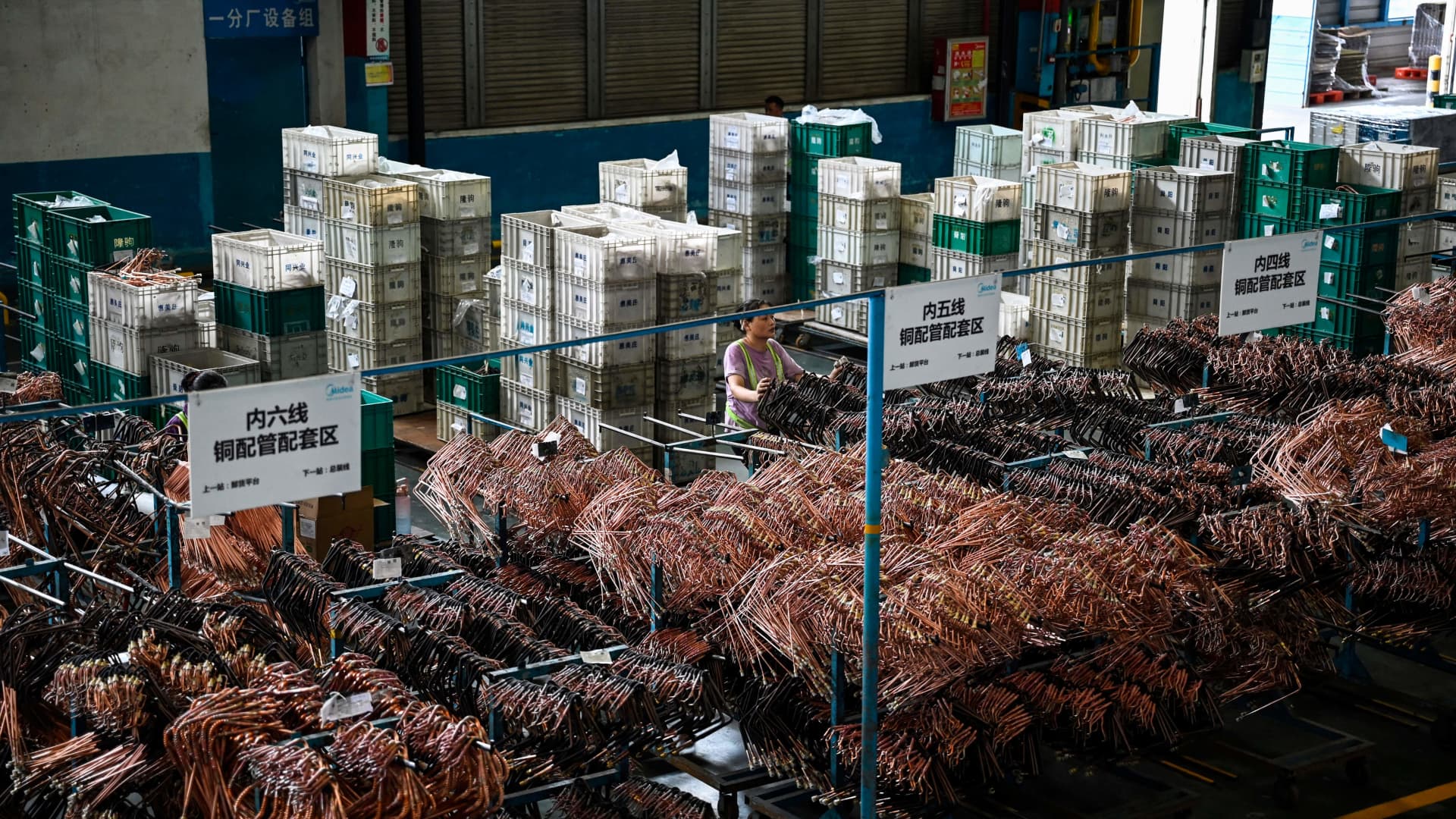Employees working on an air-conditioner production line at a Midea factory in Guangzhou, China.
Jade Gao | AFP | Getty Images
BEIJING — China reported data for July that came in well below expectations.
Retail sales grew by 2.7% in July from a year ago, the National Bureau of Statistics said Monday. That’s well below the 5% growth forecast by a Reuters poll, and down from growth of 3.1% in June. Within retail sales, catering, furniture and construction-related categories saw declines.
Sales of autos, one of the largest categories by value, rose by 9.7%. The gold, silver and jewelry category saw sales rise the most, up by 22.1%.
Industrial production rose by 3.8%, also missing expectations for 4.6% growth and a drop from the prior month’s 3.9% increase.
Fixed asset investment for the first seven months of the year rose by 5.7% from a year ago, missing expectations for 6.2% growth.
Investment into real estate fell at a faster pace in July than June, while investment into manufacturing slowed its pace of growth. Investment into infrastructure rose at a slightly faster pace in July than in June. Fixed asset investment data is only released on a year-to-date basis.
The unemployment rate among China’s youth, ages 16 to 24, was a high 19.9%. The unemployment rate across all ages in cities was 5.4%.
“The national economy maintained the momentum of recovery,” the statistics bureau said in a statement. But it warned of rising “stagflation risks” globally and said “the foundation for the recovery of the domestic economy is yet to be consolidated.”
Analyst forecasts for July were projected to show a pickup in economic activity from June, as China put the worst of this year’s Covid-related lockdowns behind it, especially in the metropolis of Shanghai.
Exports remained robust last month, surging by 18% year-on-year in U.S. dollar terms despite growing concerns of falling global demand. Imports lagged, climbing by just 2.3% in July from a year earlier.
However, China’s massive real estate sector has come under renewed pressure this summer. Many homebuyers halted their mortgage payments to protest developer delays in constructing homes, which are typically sold ahead of completion in China.
The deterioration in confidence puts developers’ future sales — and an important source of cash flow — at risk.
The potential for a Covid outbreak has remained another drag on sentiment. A surge of infections in tourist destinations, especially the island province of Hainan, stranded tens of thousands of tourists this month.
The local situation reflects the large gap between goals set at the beginning of the year and the ensuing reality. Hainan had set a GDP target of 9%, but was only able to grow by 1.6% in the first six months.
Similarly, at a national level, China’s GDP grew by just 2.5% in the first half of the year, running well below the full-year target of around 5.5% set in March.
China’s top leaders indicated at a meeting in late July the country might miss its GDP goal for the year. The meeting did not signal any forthcoming large-scale stimulus, while noting the importance of stabilizing prices.
The country’s consumer price index hit a two-year high in July as pork prices rebounded.
This is breaking news. Please check back for updates.
Image and article originally from stocksnewsfeed.com. Read the original article here.


